Carménère originates from Bordeaux, France, but primarily grows in Chile. The wine is treasured for its supple red and black berry flavors, as well as its herbaceous green pepper notes. It’s now known to be genetically identical to Cabernet Gernischt, a major red grape that grows in China.
Also known as: Cabernet Gernischt, Grand Vidure
Table of Contents
Primary Flavors
- Raspberry
- Bell Pepper
- Black Plum
- Vanilla
- Paprika
Taste Profile
Carménère contains higher levels of aroma compounds called pyrazines, which give wines like Carménère, Cabernet Franc, and Cabernet Sauvignon subtle flavors of bell pepper, green peppercorn, eucalyptus, and even cocoa powder. In many cases, it can have a mixture of red and black fruit flavors, much like Merlot.
On the nose, Carménère has a distinctive herbaceous and bell-pepper aroma. But it also has intense red cherry and blackberry aromas. When aged in oak (which is common), you’ll also find vanilla and smoke aromas. With age, you’ll find leather and earthy notes too.
On the palate, Carménère has more moderate tannin and acid than its relatives of Cabernet Sauvignon and Cabernet Franc. Though some of the most age-worthy versions do have pretty high levels of tannin. They range from moderate to full in body, and sometimes the alcohol levels can be upwards of 14-15%.
How to Serve Carménère Wine
Serve Carménère just below room temperature, between 60°F and 68°F (15-20°C). This will allow the aromas to open up, but will keep it cool enough to prevent higher alcohols from interfering with the aromas.
For glassware, a universal or standard red wine glass is perfect for Carménère to ensure enough air gets into the wine, allowing the aromas to funnel directly to your nose. Before serving, decant for 30 minutes to allow the aromas to open up.
As Carménère ages, it develops a leathery and earthy character. Most wines will improve over 2-3 years, with the best wines lasting upwards of 10 years.
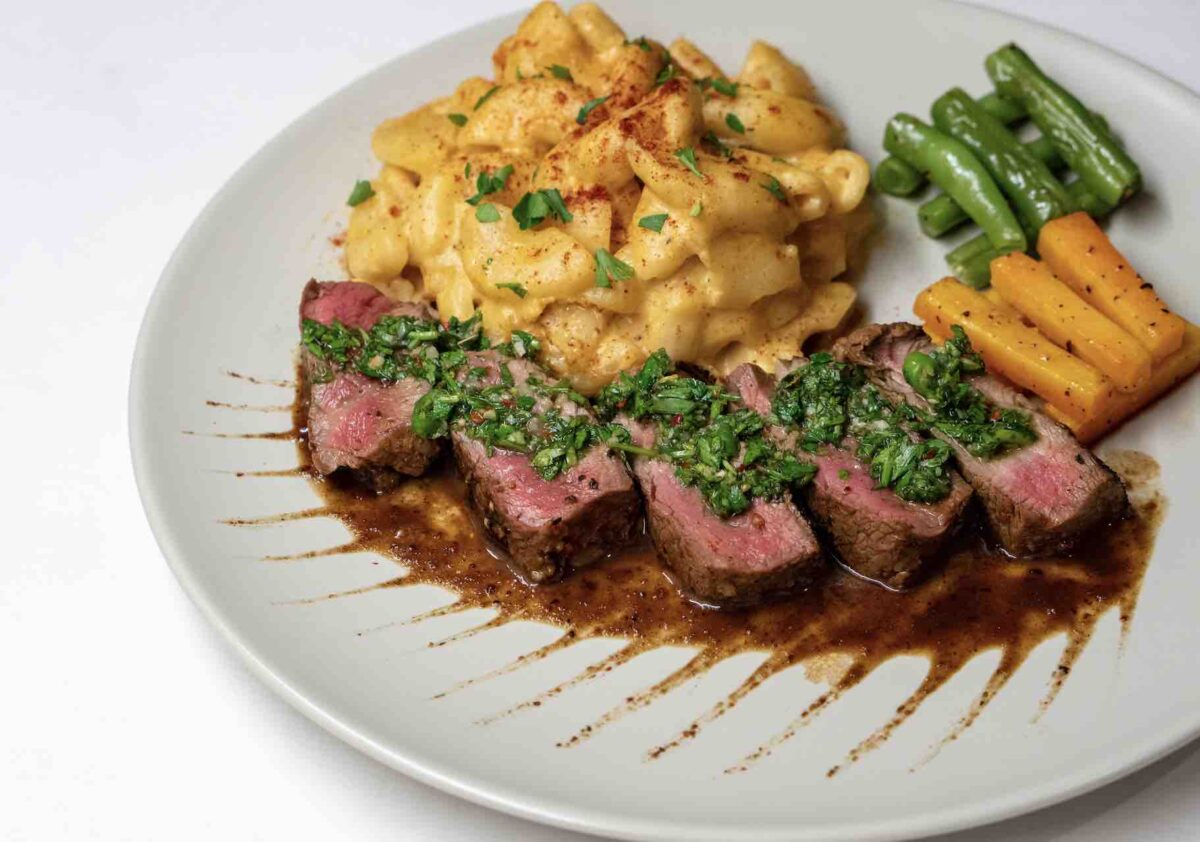
SERVE
60–68°F / 15-20°C
GLASS TYPE
Universal
DECANT
30 minutes
CELLAR
5-10 Years
Carménère Food Pairing
The moderate tannin and fresh acidity in Carménère make it a versatile red to pair with a wide variety of dishes. Ideally, leaner grilled meats with savory sauces like Chimichurri, green salsas, mint, or parsley pesto will complement the herbal qualities of the wine and make it taste more fruity. A great example is Cuban-style roast pork, known as Lechon Asado.
Beyond red meat, Carménère pairs well with darker white meats, such as turkey and duck. In short, this is one to keep around for just about everything. Pinto bean chili and white bean and kale soup are a great pair for vegetarians, too.
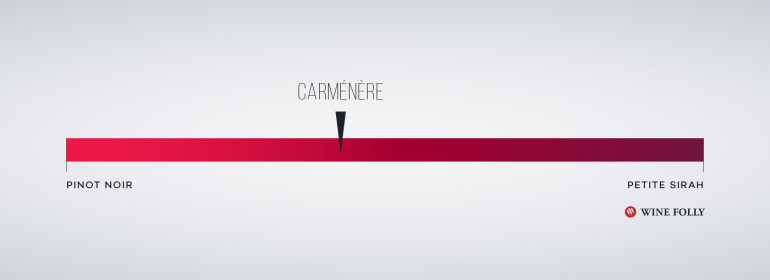
5 Fun Facts About Carménère
- Carménère is a half-sibling of Merlot and Cabernet Sauvignon, and its parent is Cabernet Franc.
- Carménère is a very slow ripening grape, and is often one of the last ones for picking during harvest, about 4-5 weeks after Merlot.
- Carménère was first introduced to Chile in the mid-1800s and was initially mistaken for Merlot until 1994.
- Carménère is nearly extinct in its homeland, France, but is the 5th most important grape of Chile.
- Carménère has possibly been around since Roman times, when it was known as Biturica.
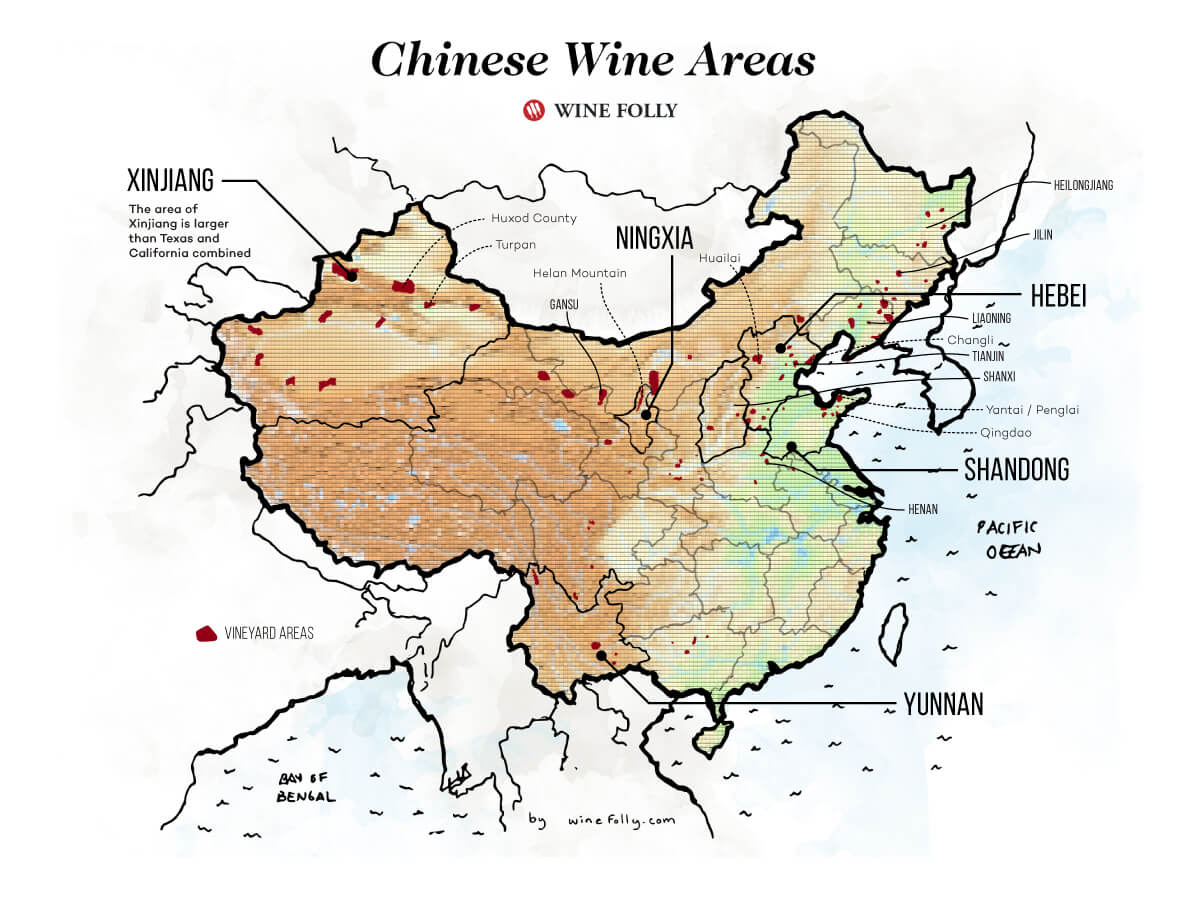
Where It Grows
Carménère originates from the Bordeaux region of France. Before the 1870s, it was a prevalent blending grape in Bordeaux, found mostly in Graves and the Pessac-Léognan appellations.
However, due to the phylloxera infestation, nearly all the Carménère vines – along with most of the vineyards in Bordeaux – were wiped out. When vignerons in Bordeaux replanted, however, they opted to plant the easier-to-grow Cabernet Sauvignon and Merlot instead, and Carménère was thought to be on the verge of extinction.
Brought to Chile in the mid-1800s, it has now found an adopted home there and is regarded by many as Chile’s flagship variety. Brought to China in the late 19th century and known as Cabernet Gernischt, China now has the largest plantings of Carménère in the world.
- China: 27,676 acres (11,200 hectares)
- Chile: 25,953 acres (10,503 hectares)
- Italy: 1,570 acres (635 hectares)
- Argentina: 146 acres (59 hectares)
- France: 69 acres (28 hectares)
Total Vineyard Area — 55,564 acres (22,486 hectares) (Source: University of Adelaide, 2021)

China
What to expect: Caménère here is known as Cabernet Gernischt and is often blended with other Cabernets, like Cabernet Sauvignon and Cabernet Franc. Most of these blends have a very distinctive green bell pepper note and high levels of peppercorn as well.
Ningxia is home to the most critically acclaimed wines in China. The region specializes in Bordeaux varieties, including Cabernet Sauvignon, Merlot, and Cabernet Gernischt (Carménère). You will find Carménère planted throughout the many wine growing regions of China too.
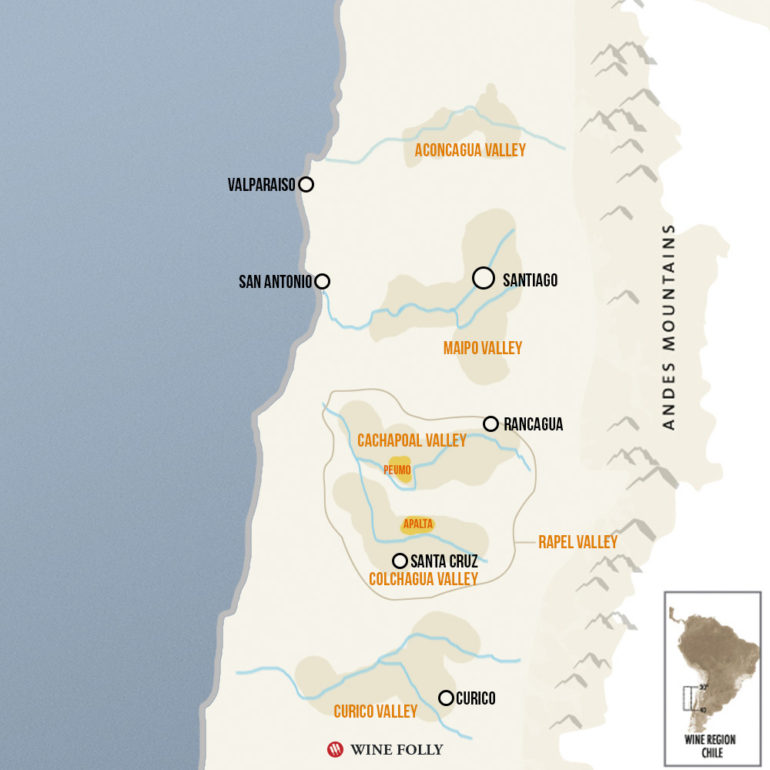
Chile
What to expect: The majority of Carménère hails from within the Central Valley of Chile. This is the largest wine-producing region in Chile, and it encompasses several areas renowned for their Carménère production. Overall, you can expect Chilean Carménère to have ripe red and black fruit flavors alongside a healthy dose of green bell pepper notes and fine tannins with fresh acidity. There’s a purity of fruit you won’t find elsewhere.
Maipo Valley: Maipo is the northernmost subregion of the Central Valley Region. Quality Carménère from this region is somewhat lighter, with lovely floral notes of cherry, hibiscus, and rose, complemented by a subtle petrichor/granite-like minerality. These more refined and elegant aromas originate from altitude, as well as cooling influences from the Andes.
Cachapoal Valley: The Cachapoal Valley tends to produce Carménère wines with a balance between sweet and sour cherry fruit and the characteristic herbal green peppercorn note. Wines often have heightened acidity, which suggests that this region may produce age-worthy wines.
Peumo: A sub-zone within the Cachapoal Valley, Peumo wines are consistently rated amongst the very best Carménère from Chile. The region is one of the oldest wine-producing areas in Chile. Carménère wines here have a fuller-bodied style, with sweet red berry aromas and a higher alcohol content. Carménère wines from Peumo have been shown to age 15 or so years.
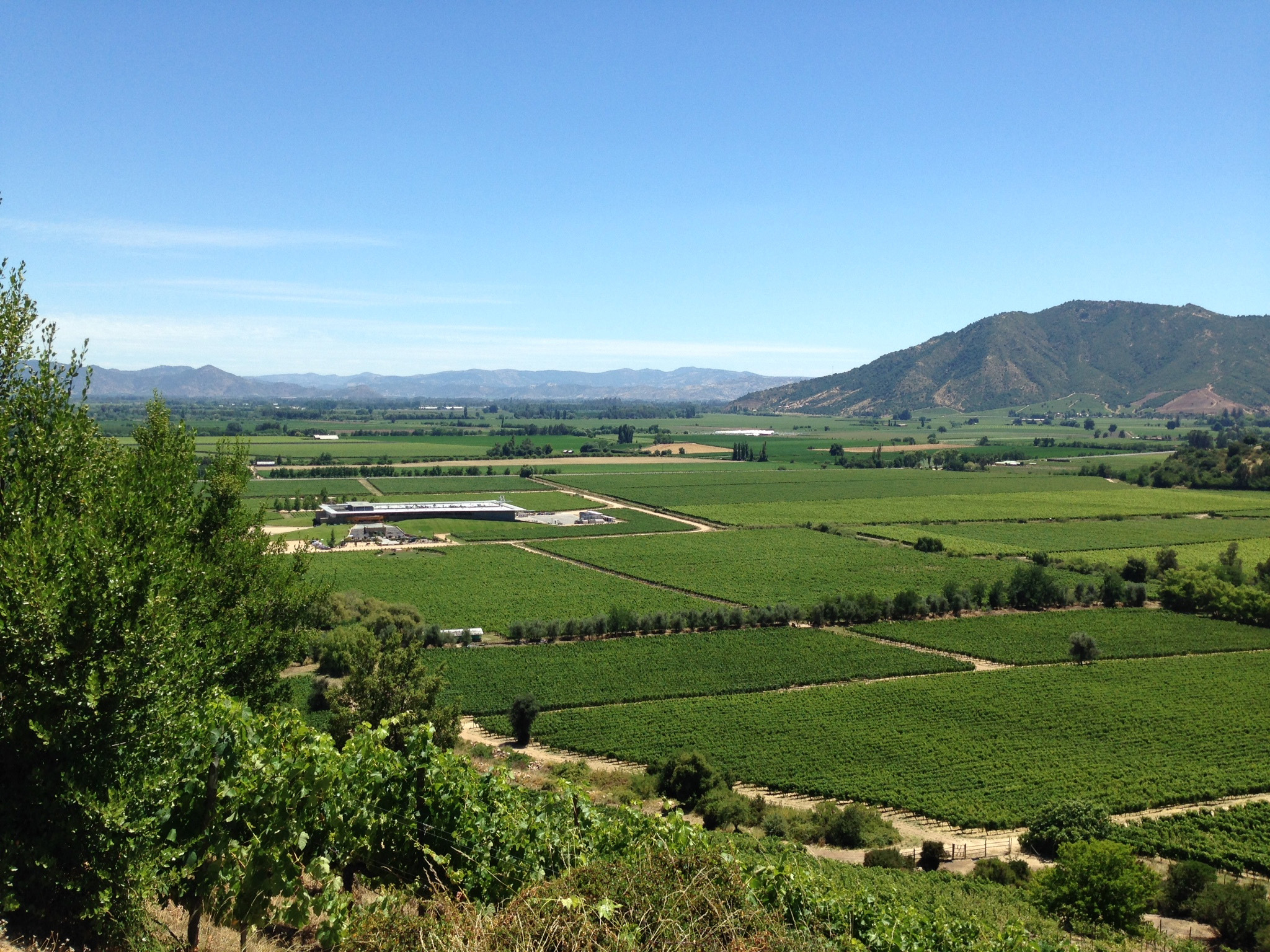
Colchagua Valley: You’ll find that most Carménère on the market today hails from Colchagua Valley. Most wines will exhibit rich raspberry aromas, along with a distinct herbal note reminiscent of green peppercorn. However, the region is quite varied in style from the coast to the foothills of the Andes.
Apalta: Within the Colchagua Valley is a sub-region called Apalta, in the transverse range between the Andes and the Pacific. Carménère wines from this area produce more structured tannin and are often oaked to reveal sweet raspberry notes and very little herbaceousness. The region is home to just six wineries, as the rest is protected forest land.
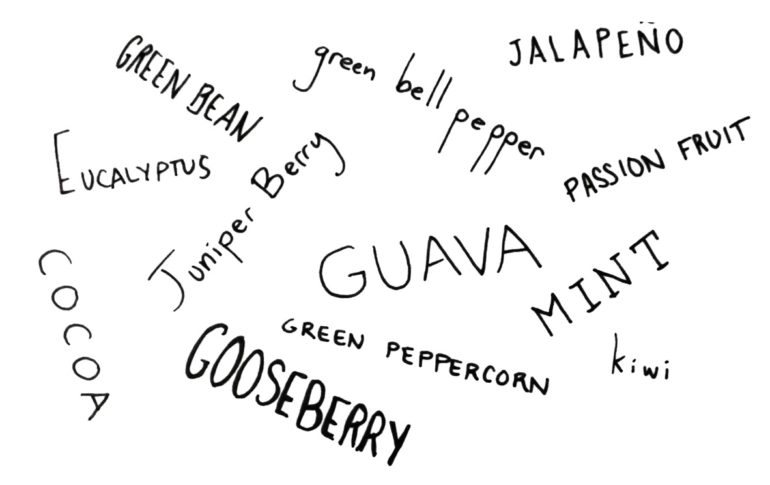
In-Depth Knowledge
Take a deep dive into understanding the complex nature of Carménère.
Why So Green?
In the world of wine, Carménère is like the eccentric uncle with an unforgettable personality, all thanks to a family of aroma compounds known as methoxypyrazines. Picture this: it’s like a family reunion with its parent, Cabernet Franc, but instead of bringing a bottle of Bordeaux, Carménère rolls in with a bowl of green peppers.
These bold, veggie-like scents are the handiwork of a methoxypyrazine named isobutyl methoxypyrazine (IBMP). Yet when Carménère has had enough sunbathing, it can also unleash a burst of rich, dark fruit flavors. Yes, Carménère’s a bit of a show-off, but we wouldn’t want it any other way – it’s what makes this ancient grape variety so distinctively delightful!

Witness Protection Program
Carménère, an old-world grape with a sense of adventure, took a journey from the vineyards of Bordeaux only to find itself unwittingly settling in Chile, creating a cozy home away from home.
It’s like the grape’s version of a Witness Protection Program, hiding under the guise of Merlot until the mid-90s, when a curious ampelographer revealed its true identity. But the plot thickens!
Across the Pacific, China was busy nurturing vast vineyards of what they charmingly called “Cabernet Gernischt”. Surprise, surprise, it’s our globe-trotting Carménère again!
A victim of mistaken identity twice over, Carménère has renewed popularity in these distinct terroirs. Now, it’s standing tall in Chile’s vineyards and coloring the vast expanses of Chinese countryside with its deep purple clusters, adding a spicy, earthy flair to the global wine narrative. Talk about a grape with a double life!
